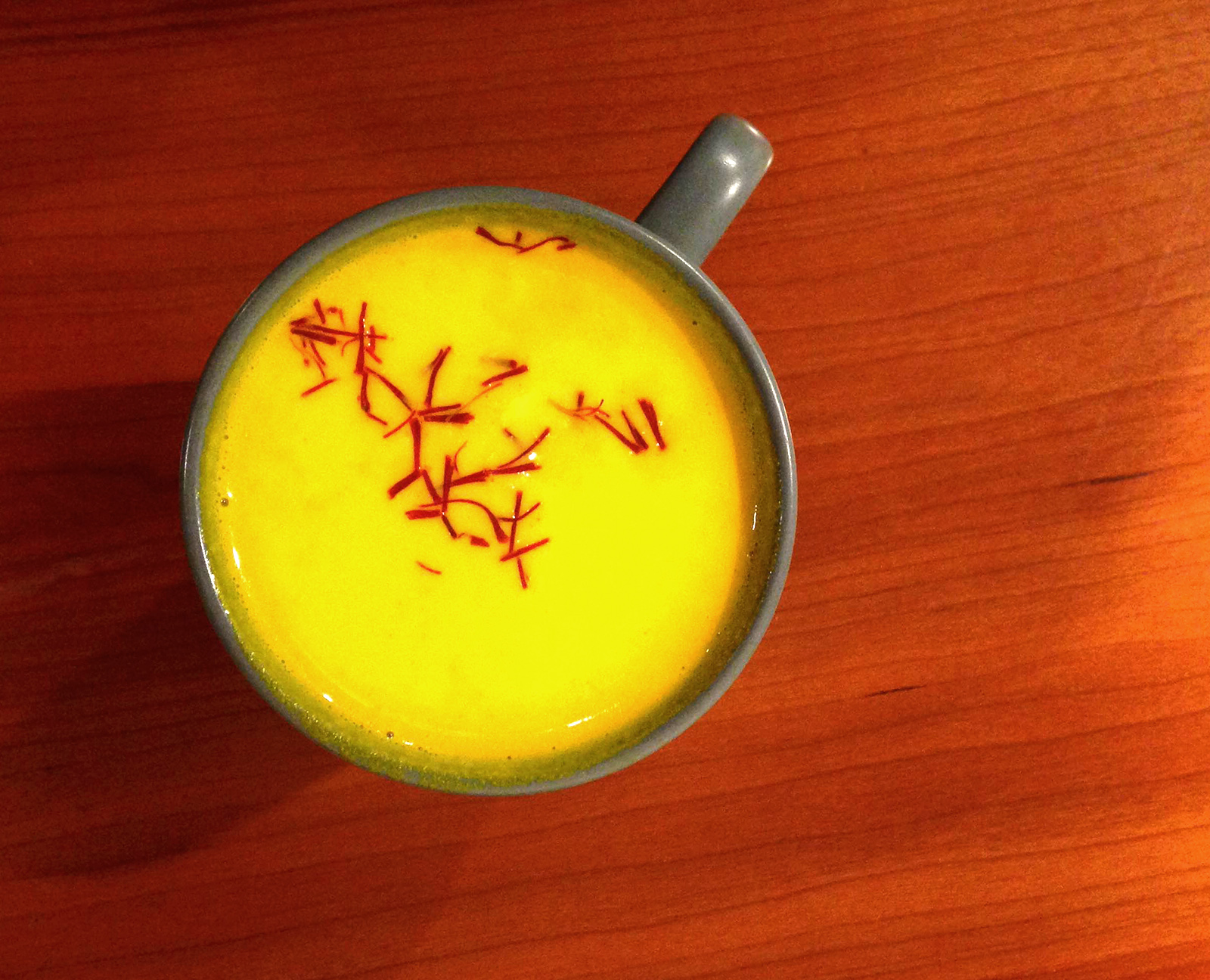Second Take: My Indian culture should not be used as a marketing tool

Turmeric is a plant of the ginger family and is used widely in Indian cuisine. “Turmeric latte” or “golden milk” is a spin-off of “haldi doodh,” a common Indian beverage of turmeric in milk. (Namrata Kakade/Daily Bruin senior staff)
By Namrata Kakade
June 1, 2016 11:39 p.m.
I chose to eat school lunches of cheese pizza and chocolate milk over homemade spiced vegetables, curry and rice as an elementary school kid, but not because I hated Indian food.
I can’t get enough of the blast of flavor that comes with every bite. But outside the Indian community, Indian food is notorious for its strong smell, spiciness and messy curries. I was afraid my elementary school friends would treat the contents of my lunchbox with disdain, so I gave up the homemade meals and opted for cafeteria food just to fit in.
Nowadays, my culture has become an inspiration for hipster fads. From “chai tea” to yoga, traditions I’ve practiced since I was a child have been tailored for white audiences’ tastes and sold back to me as chic new ways to be different and exotic. I was bullied for having oily hair as a child only to hear my non-Indian friends wax poetic about coconut oil years later.
On May 16, BuzzFeed India posted a critique of yet another hipster fad, this time a new trending beverage called “turmeric latte” or “golden milk,” which the Guardian wrote about earlier that week. Turmeric lattes are what my grandmother refers to as “haldi doodh” and the recipe, calling for turmeric juice and milk, was one she had been using in her kitchen for as long as I can remember.
Turmeric is a plant of the ginger family and is used widely in Indian cuisine, Hindu religious practices and my grandmother’s medicine cabinet. Its health benefits and religious symbolism make it an integral part of Indian culture. I would take haldi doodh as a home remedy for sore throats or as comfort food to help me sleep.
I’m not bothered by the Western world’s consumption of foods and use of ingredients from a different culture. Cultural mixing is to be expected with immigrant populations across the world and easy access to information about different cultures through the internet.
But after years of being told my culture is weird, unflattering or less civilized, I felt defeated after realizing it wasn’t the customs and traditions people seemed to disapprove of so much as who was practicing them. Slap on some pale-skinned suppliers and tag on a “latte,” and suddenly the same traditions are more desirable.
My relative’s white boss insisted to him once that employees wearing traditional Indian dresses to work was unprofessional and should not be allowed. Meanwhile, white rapper Iggy Azalea donned a sari and golden bangles, hopped on an elephant and was rewarded with a second top-20 spot on the U.K. Singles Chart with her 2013 song, “Bounce.”
Apparently, Indian culture is only worth what it can bring to the table in entertainment value. The list goes on. It includes the use of coconut oil for hair treatment, a practice that helps maintain the thick hair common to Indian people, and the recently popular Color Run. The Color Run marathon takes the practice of playing with colored powder – traditionally a form of celebrating the Hindu festival of Holi – and rebrands it as “the happiest 5k on the planet.”
Traditional Indian practices aren’t digestible until white subcultures vouch for them.
Maybe if scores of Indian immigrant families didn’t have to struggle every day to get their friends and colleagues to respect their way of life, I wouldn’t be so indignant.
I don’t want to put an end to cultural exchange, and I’m not advocating for the Western world to stop participating in Indian culture. But the reality is non-white communities continue to be ostracized for practices deeply important to their identities, while the Western world cherry-picks parts of these cultures and turns them into passing trends.
Iggy Azalea can take off her bindi when she’s satisfied with playing Indian, so she will never have to face the xenophobia of white America. Meanwhile, people like my relative’s colleagues are scorned if they want to continue dressing per their traditions, forcing them to adopt Western ways to avoid being singled out.
Understanding the history of colonialism in India, racism and xenophobia toward Indian people is the first step to discerning cultural appreciation from appropriation. It’s important to know when to partake in the culture and when to desist: One can wear a bindi at an Indian temple to be respectful, but not as a fashion statement at Coachella.
Whether it’s profiting off a religious festival or using a community’s traditional garb as a form of entertainment, the actions of the Western world can further marginalize communities by perpetuating stereotypes and trivializing deeply sacred practices. White people need to understand how their participation in other cultures affects the communities those cultures belong to. It’s crucial to reflect on and view one’s actions in the context of a xenophobic society, and not in isolation.
The day Indian kids in elementary school can eat their homemade lunch without fearing mockery is the day I’ll toast to a turmeric latte.

